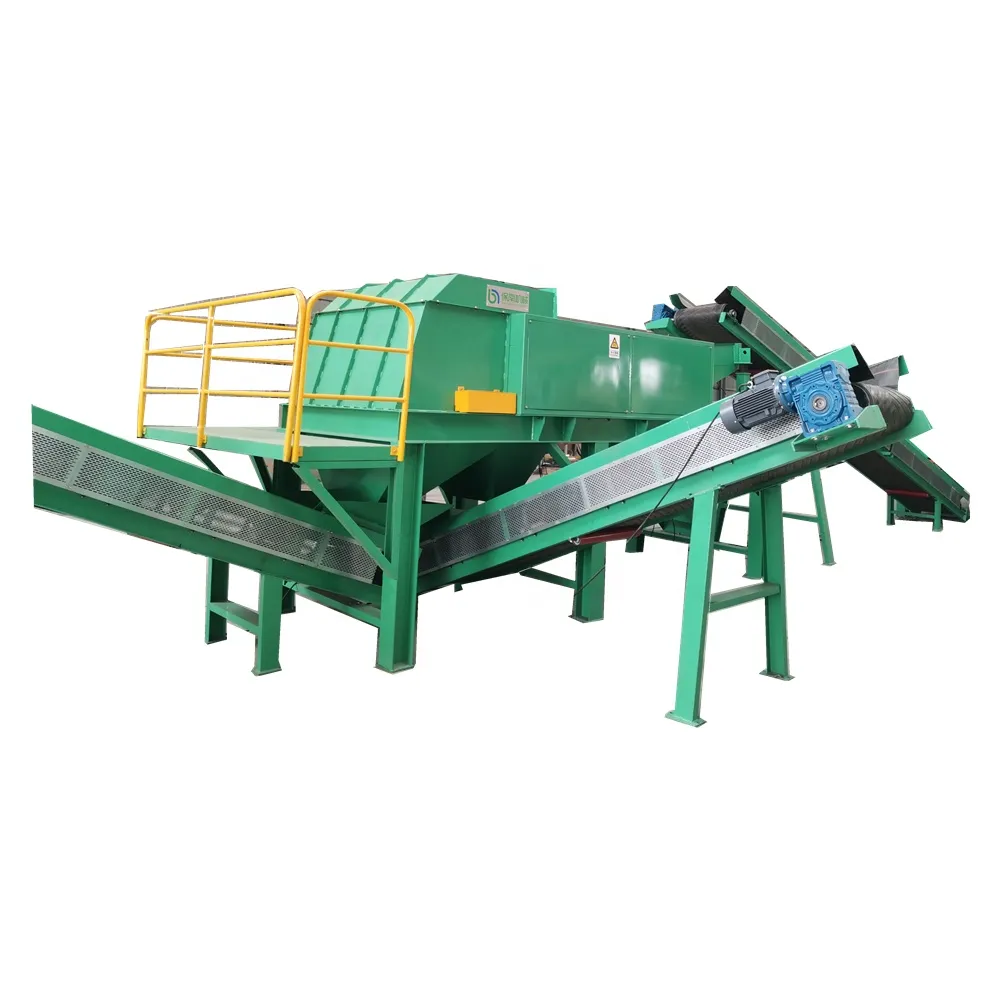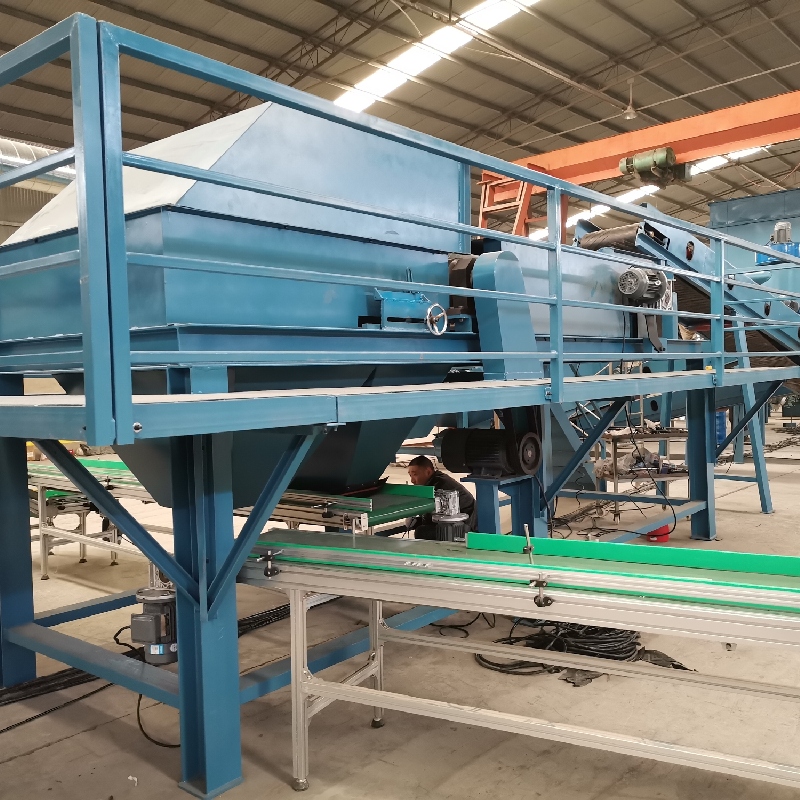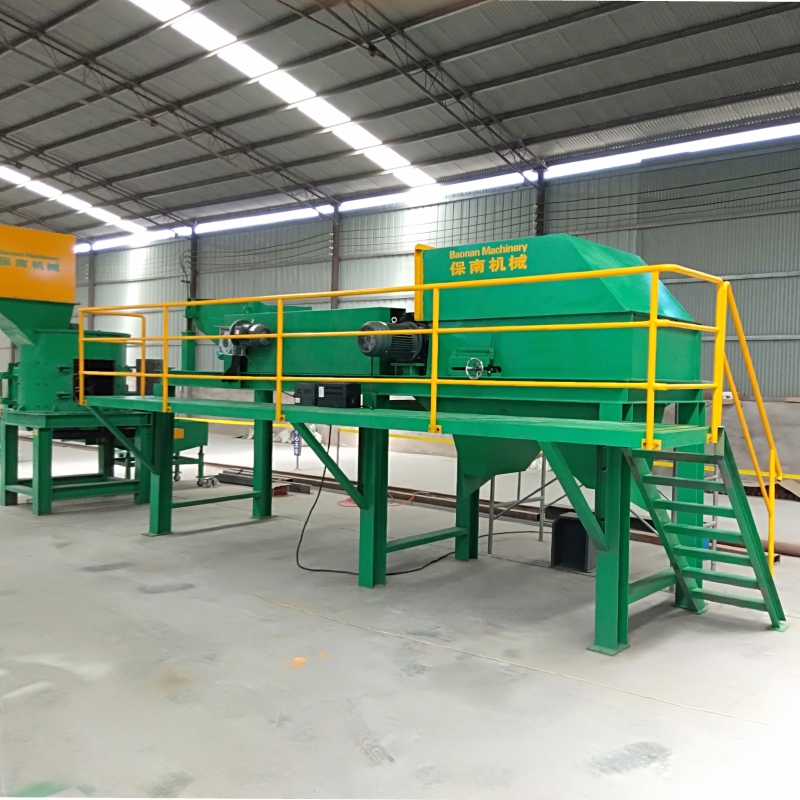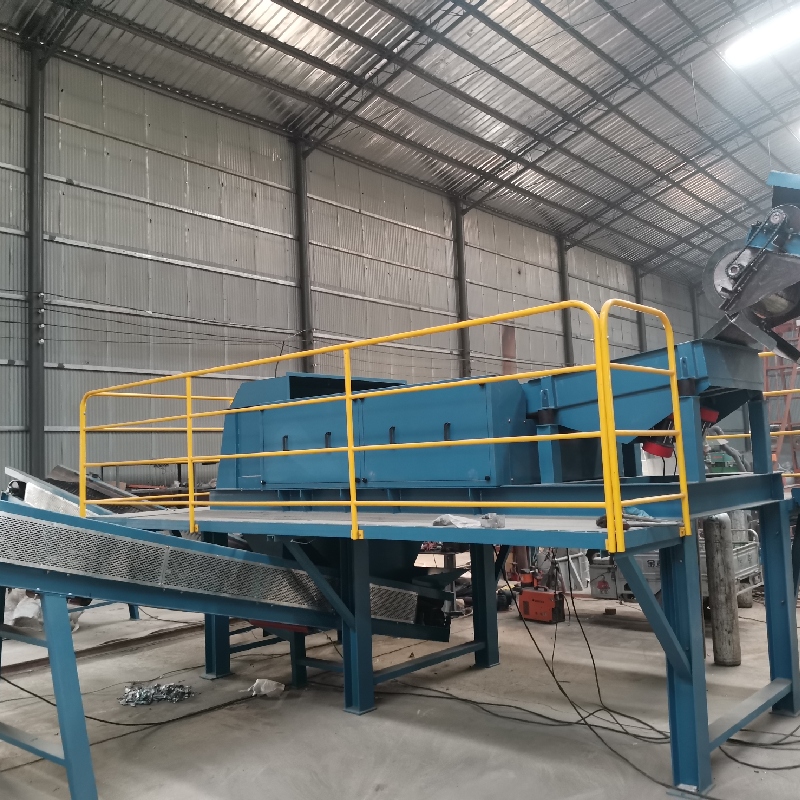
Oct . 18, 2025 14:05 Back to list
If you’re speccing an eddy current separator for a MRF, WEEE line, or IBA upgrade, this will save you a few calls. I’ve walked yards from Dafu Village, Qingyuan Town, Baoding all the way to midsize plants in Central Europe, and—honestly—the same questions pop up: throughput vs. purity, belt width vs. footprint, and who supports you after month 13.

A eddy current separator induces rapidly alternating magnetic fields via a high-speed rotor; conductive particles (aluminum, copper, brass) experience repulsive forces and arc forward into a non-ferrous stream. In practice: it’s the fastest way to lift aluminum value out of a mixed residue, especially post-ferrous and post-screening.
Industry trend? Higher pole counts, smarter eccentric rotors to minimize “magnetic back-drag,” and safer, easier belt swaps. Surprisingly, many customers say the biggest ROI comes from cleaning glass cullet and PET—less aluminum fines in the wrong place.
| Parameter | Spec (≈, real-world use may vary) |
|---|---|
| Belt width | 600 / 800 / 1000 / 1500 mm |
| Rotor type | Concentric or eccentric, 16–36 poles |
| Rotor speed | 1800–3400 rpm (VFD adjustable) |
| Throughput | 1.5–15 t/h depending on fraction and belt |
| Particle size window | 5–120 mm (best recovery >10–15 mm) |
| Power | Main drive 5–15 kW; rotor 5–22 kW |
| Safety & guarding | Interlocked covers, IEC/EN motor ratings |

Service life: belts typically 6–18 months; bearings 20k–40k hours with correct lubrication; rotor shell depends on abrasive fines (IBA is tough—plan liners). Testing standards I see referenced: ISO 21940 (rotor balance), IEC 60034 (motor), and EN 50625 for WEEE treatment performance checks.

Use-cases: auto shredder residue, IBA cleanup, cable scrap, PCB ash, glass cullet polishing, PET/HDPE bottle flake, aluminum dross. Advantages? High non-ferrous recovery, low labor, and—actually—the intangible win: cleaner downstream analytics. Many customers report “a calmer plant” once the eddy current separator is tuned right.
| Vendor | Rotor | Service | Notes |
|---|---|---|---|
| OW Recycling (Baoding, Hebei) | Concentric/eccentric, high-pole options | Local install + remote tuning | Strong value; custom widths 600–1500 mm |
| Vendor A (EU) | Eccentric, premium bearings | Dense EU dealer network | Higher price; fast parts |
| Vendor B (US) | Concentric, rugged shell | Good training materials | Great on ASR; lead times vary |

From Dafu Village, Qingyuan District, the OW team will tweak belt width, pole count, rotor eccentricity, splitter geometry, and guarding to your fraction. Request factory test videos with your sample; I like to see aluminum recovery ≥95% at 3 t/h on 20–60 mm feed and copper carryover <3% by mass. Certifications to ask for: CE/UKCA compliance, ISO 9001 plant QA, and motor plate data per IEC 60034.
Hebei MRF retrofitted a 1000 mm eddy current separator on glass cleanup. After tuning rpm and feeder stroke, aluminum contamination in cullet dropped from 1.8% to 0.4% (third-party assay), while recovered Al value offset capex in ≈11 months. Operators—this is real—said the “belt tracking alarm finally stopped shouting.”

“Quiet rotor, easy to dial,” one plant manager told me; another said, “we underestimated the value in PCB ash.” To be honest, the secret is boring: stable feed and routine checks. Do that, and a eddy current separator pays for itself faster than the spreadsheets predicted.
Latest news
Hammer Mill Glass Crusher – Efficient Glass Recycling Solutions | OW Recycling
NewsNov.18,2025
Hammer Mill Car Shredder: Efficient Vehicle Recycling & Sustainable Waste Management
NewsNov.17,2025
Durable and Efficient Hammer for Crusher: Your Guide to Choosing the Best Impact Tools
NewsNov.15,2025
Discover Top Hammer Crusher Manufacturers for Efficient Material Processing
NewsNov.15,2025
Hammer Crusher in Cement Plant: Durable & Efficient Crusher Solutions
NewsNov.15,2025
Efficient Hammer Crusher for Coal: Durable & Cost-Effective Solutions
NewsNov.14,2025